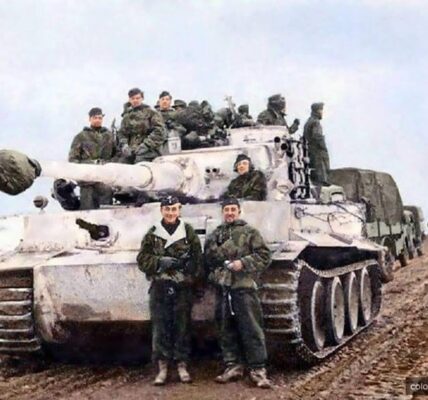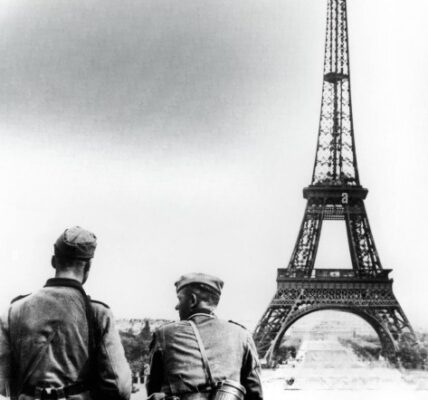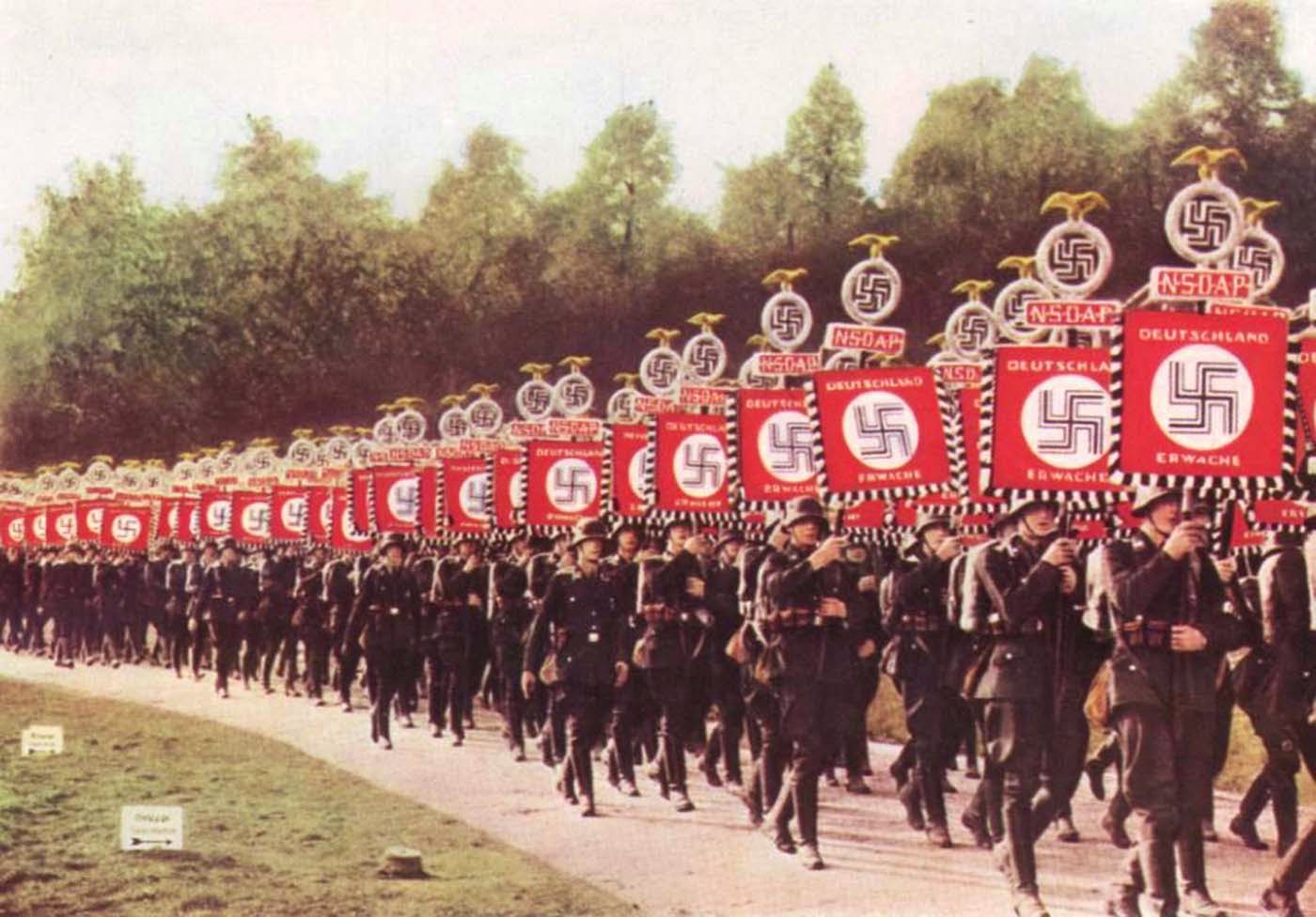
The ceremony was considered an art.
The photographs exhibited here are by Hugo Jäger , a former personal photographer of Adolf Hitler. He traveled with Hitler in the years before his rise to power and during World War II.
He was one of the few photographers who used color photography techniques at that time.
When the war ended in 1945, Jaeger hid the photos in a leather suitcase.
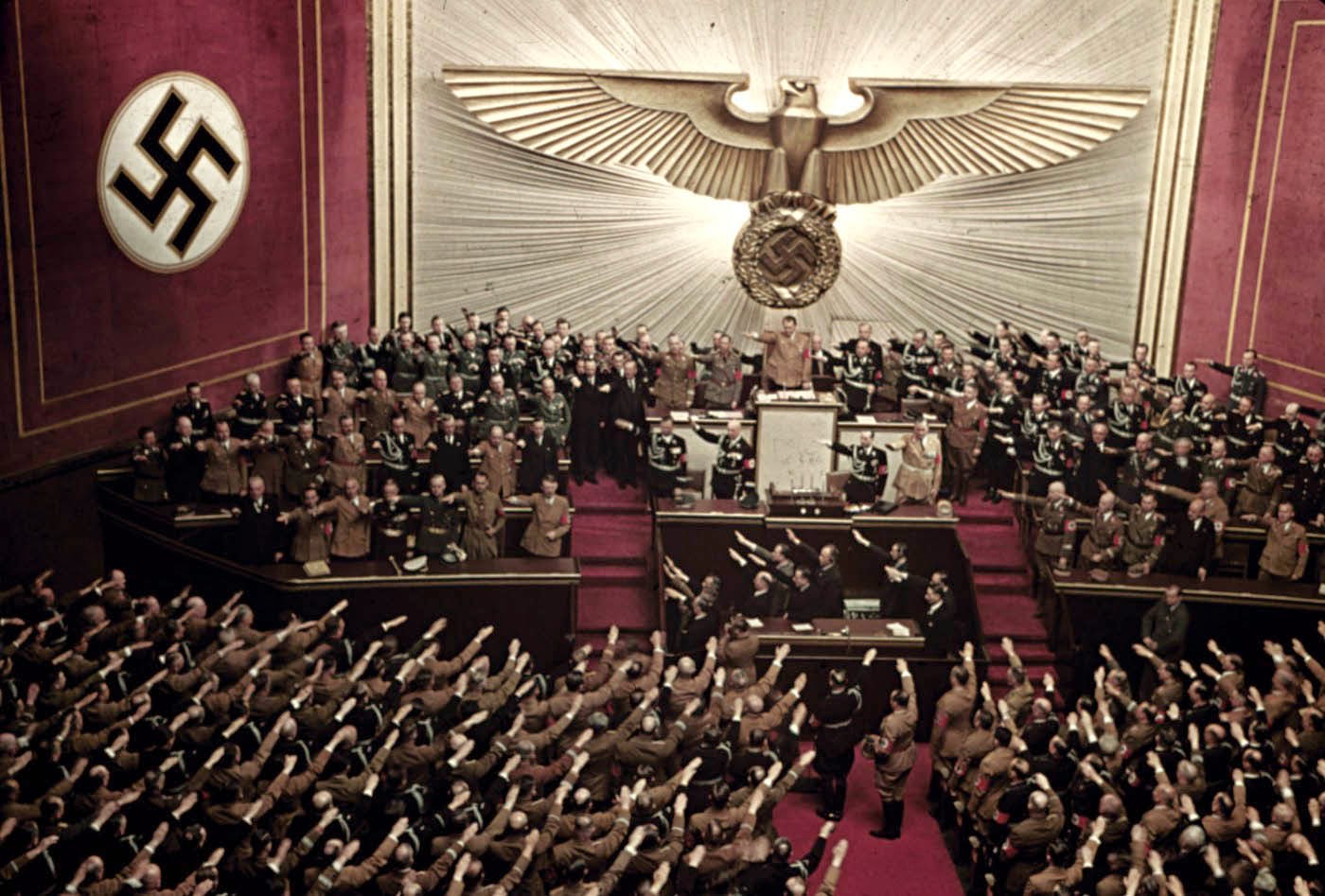
Adolf Hitler delivers the keynote speech at the Reichstag session in the Kroll Opera House in Berlin in 1939.
Then he encountered American soldiers and feared he might be arrested and prosecuted because he was carrying so many pictures of the wanted man.
However, when the soldiers opened the suitcase, their attention was distracted by a bottle of cognac they found there. They opened it and shared it with Jaeger.
Jaeger buried the photos in twelve glass jars outside Munich.
The photographer returned to the gravesite for several years to ensure the photos were safe. Ten years later, in 1955, he exhumed all the photographs and stored them in a bank vault. In 1965, Jaeger sold them to Life magazine.
%2Bat%2BCharlottenburg%2BTheatre%2C%2BBerlin%2C%2B1939..jpg)
Adolf Hitler and Joseph Goebbels (in the box) at the Charlottenburg Theater, Berlin, 1939.
The Nazi Party was not only a political organization, but also a vicious psychological propaganda machine. The Nazis had an incredible sense of aesthetics and were fully aware of the power of iconography and branding.
Here we see the world of the Nazis through these rare color photographs. The symbols and colors of National Socialism were all carefully staged for maximum psychological impact.
The structure of the crooked cross and the use of dramatic colors such as red, white and black were by no means accidental.
Long, draped banners and standards with Roman eagles and gilded leaves were intended to evoke images of strength, power, and a connection with history.

Annual midnight swearing-in of the SS troops in the Feldherrnhalle, Munich, 1938.
Nazi symbols are seductive. They look good in a wicked way. They are sharp, carefully tailored to attract attention, and designed to arouse passions. The armbands on the black uniforms are an impressive sign of masculinity and supreme self-confidence.
SS uniforms were decorated with the death’s head, a deliberate move to instill fear and terror in anyone who wore the uniform. The men who wore them felt empowered by the uniform’s menacing appearance.
The ceremony was considered art. There was nothing random or incidental about the Nazi pageantry. Everything was carefully staged and orchestrated.

Reichserntedankfest , 1934.
Nighttime processions with fires and bonfires where books were burned were all designed for effect. They reveled in heroic tales and glorified war.
The images of the Nuremberg rallies still impress us today with the absolute precision and drama of the staging that the Hitler regime created on the Zeppelin Fields.
The black-white-red color scheme is based on the colors of the flag of the German Empire. After the fall of the German Empire, the colors black-white-red became widely associated with German nationalists who opposed the Weimar Republic.
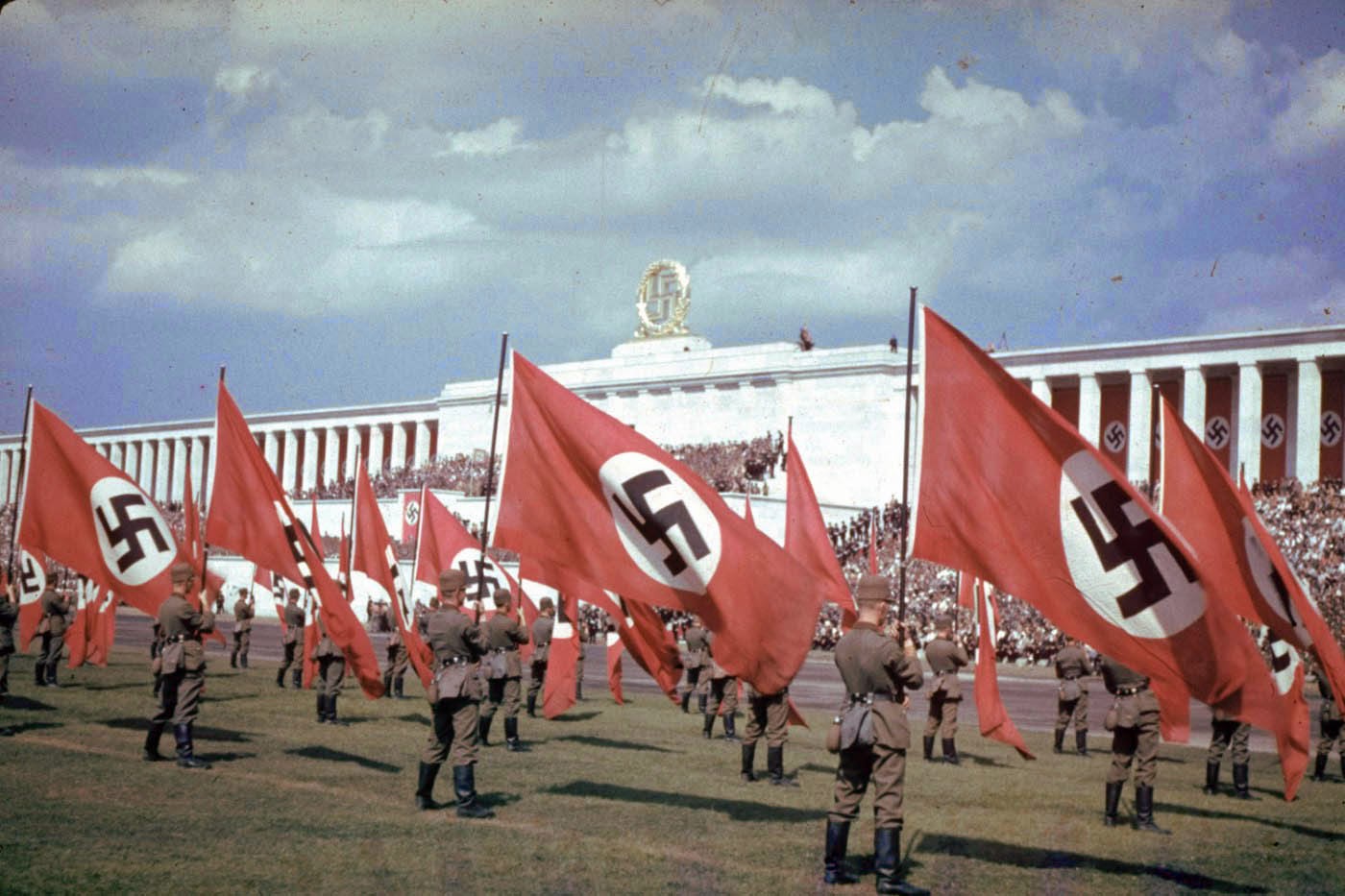
Nazi Party Rally 1937, Nuremberg, Germany.
In “Mein Kampf,” Adolf Hitler defined the symbolism of the swastika flag: The red stands for the social idea of the Nazi movement, the white disc for the national idea, and the black swastika, which has been used in Aryan culture for thousands of years, stands for “the mission of the struggle for the victory of the Aryan man and, at the same time, for the victory of creative labor.”
Hitler knew that the combination of red, white, and black psychologically created a sense of intimidation and power. For this reason, the same color combination was used in many propaganda materials, such as these banners.
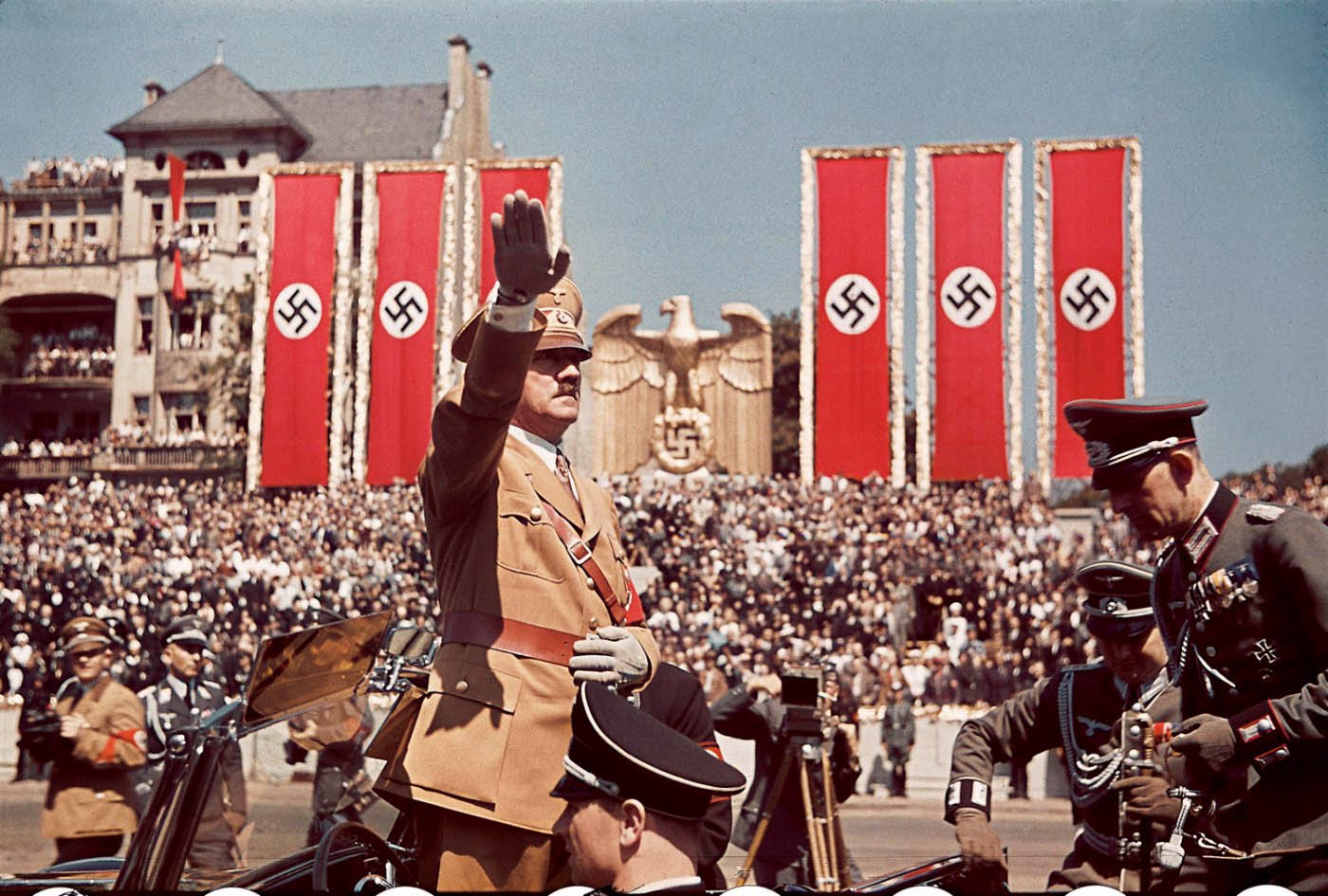
Adolf Hitler salutes the troops of the Condor Legion, who fought alongside the Spanish nationalists in the Spanish Civil War, during a rally upon their return to Germany in 1939.

Adolf Hitler speaking in the Lustgarten, Berlin, 1938.

Berlin illuminated at midnight in honor of Hitler’s 50th birthday, April 1939

Crowds cheer Adolf Hitler’s campaign to unify Austria and Germany in 1938.

League of German Girls dances during the 1938 Nazi Party Rally in Nuremberg.

Nazi officials on their way to the laying of the foundation stone of the Volkswagen plant in Fallersleben, 1938.
.jpg)
Adolf Hitler at the swearing-in of the SS flag bearers at the Reich Party Rally, Nuremberg, 1938.
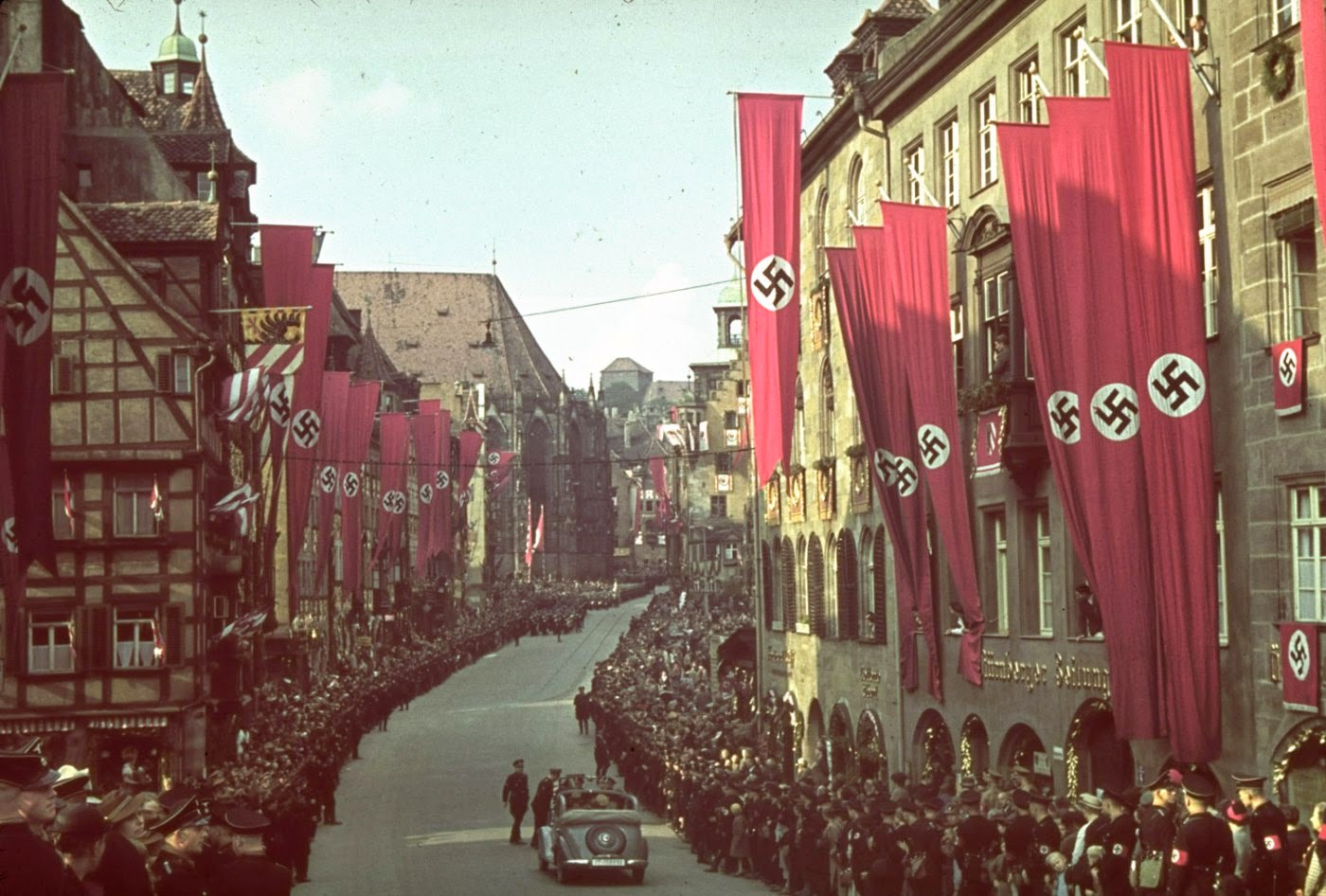
Nuremberg, Germany, 1938.

Reich Propaganda Minister Joseph Goebbels speaks in the Lustgarten in Berlin in 1938.
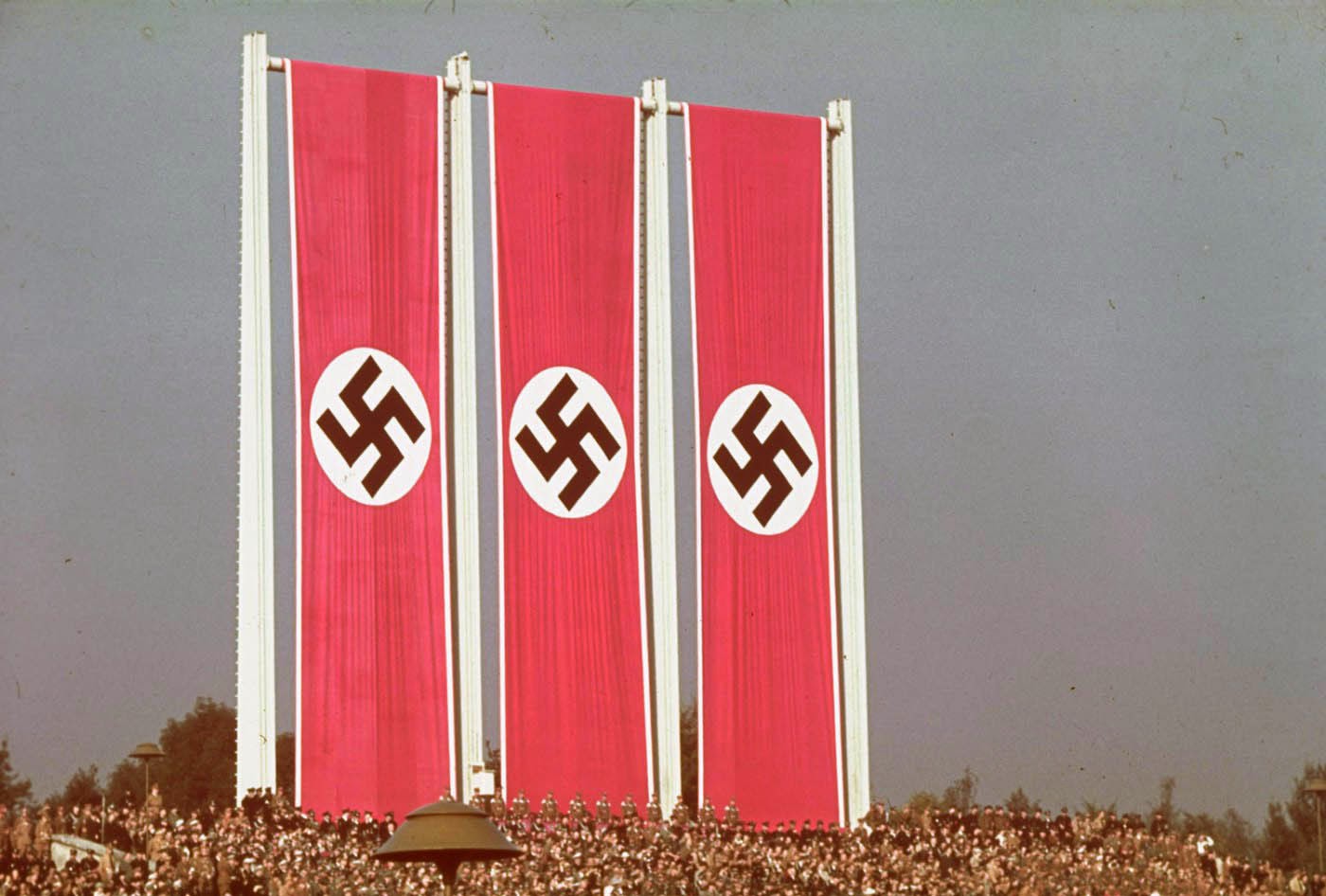
Reich Party Rally, Nuremberg, Germany, 1938.
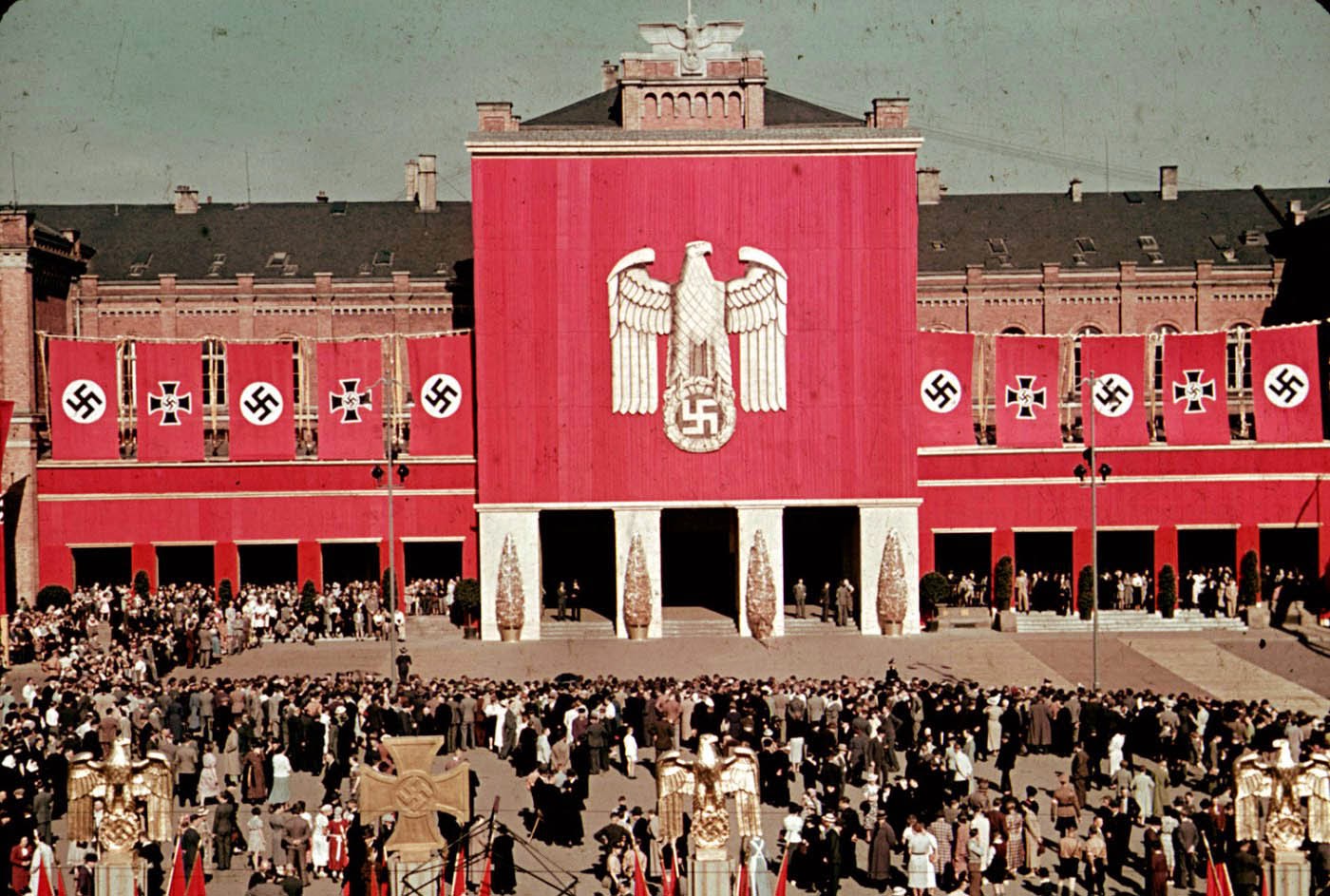
Reich War Veterans Day 1939
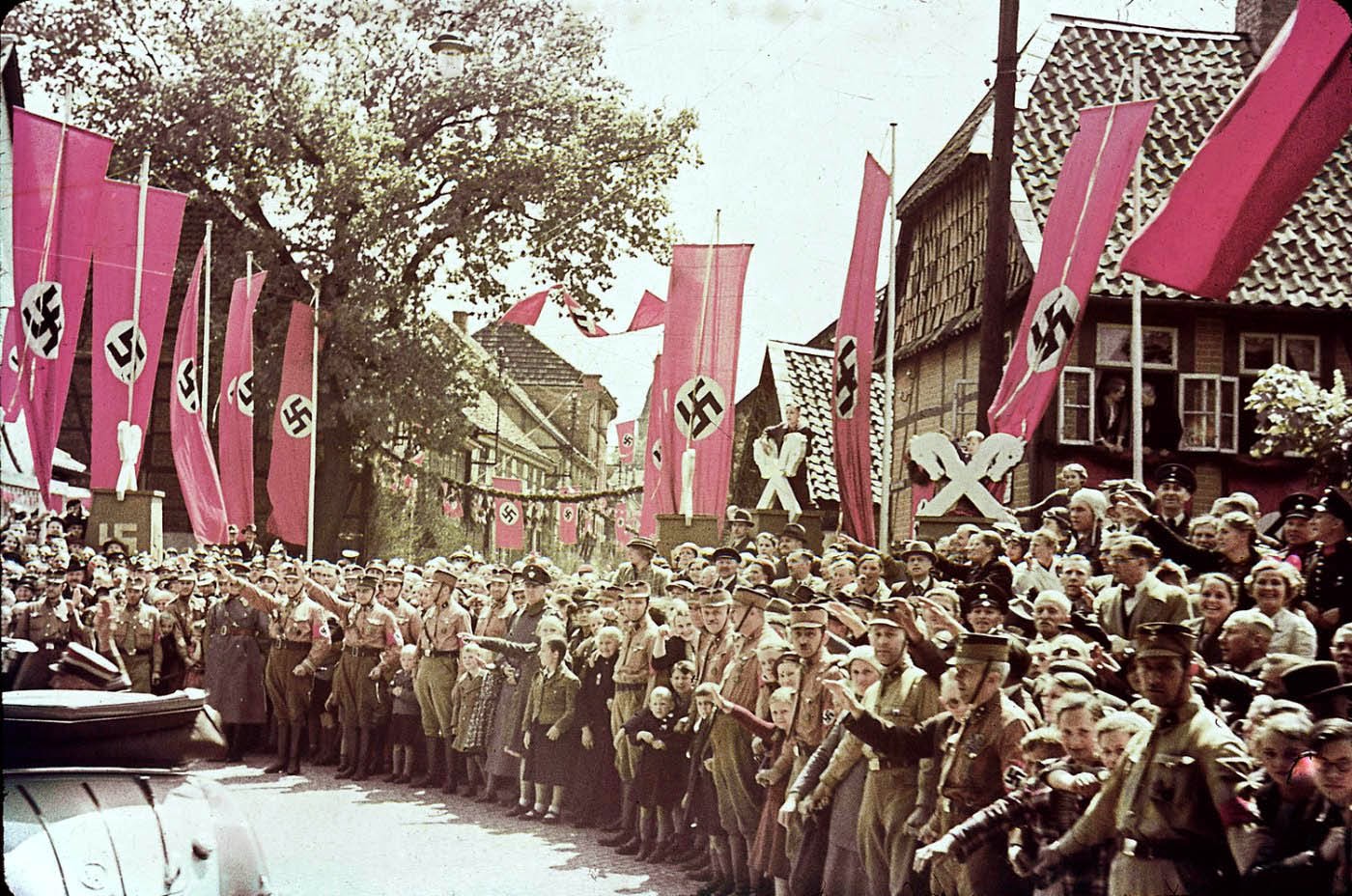
Scene along the road to the laying of the foundation stone of the Volkswagen factory in Fallersleben, Germany, 1938.
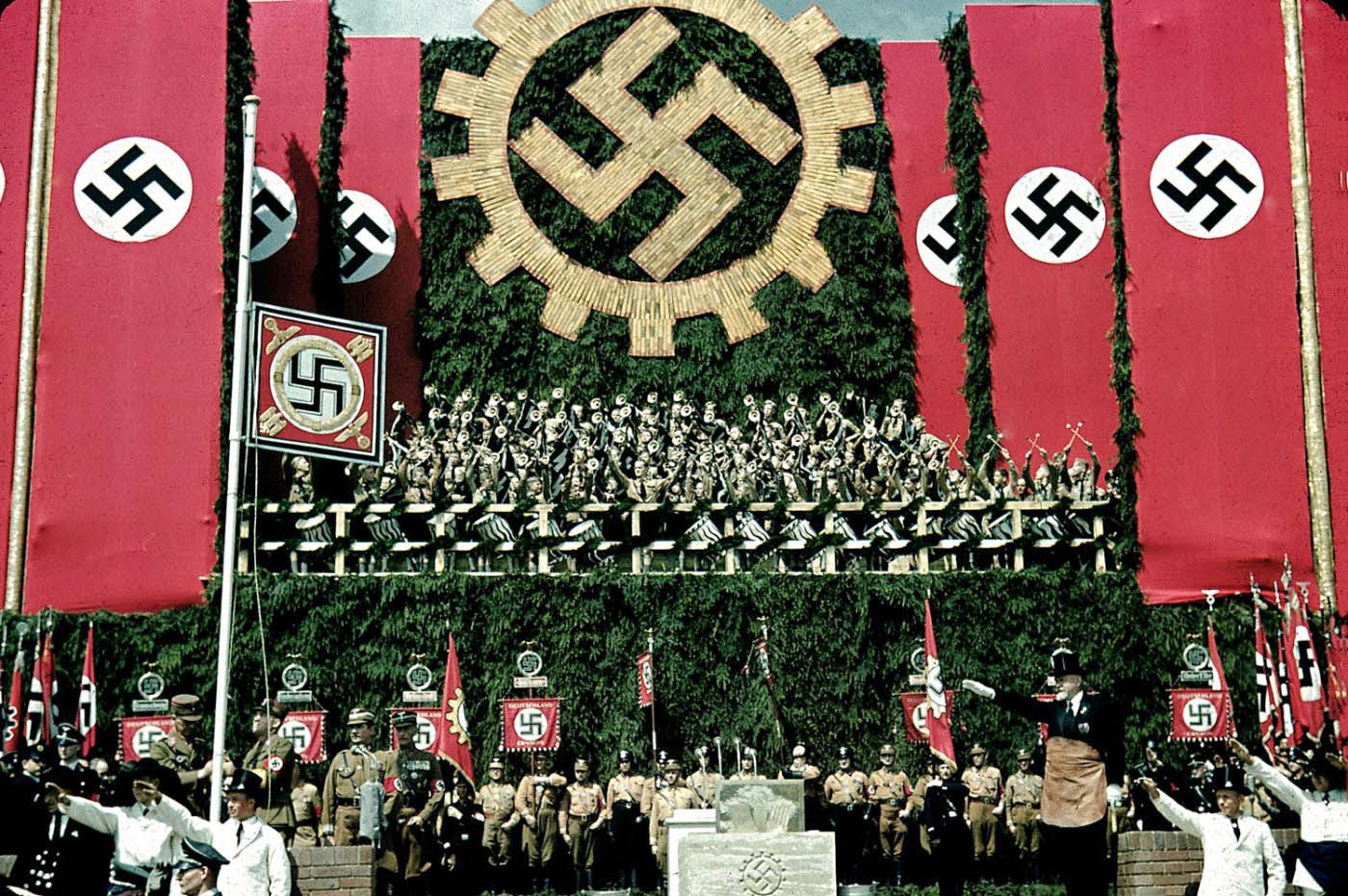
Laying of the foundation stone of the Volkswagen factory near Wolfsburg, 1938.

Another picture of the laying of the foundation stone of the Volkswagen factory near Wolfsburg, 1938.

